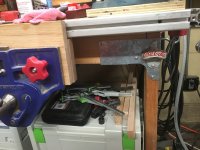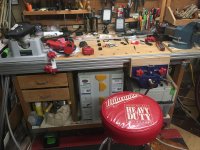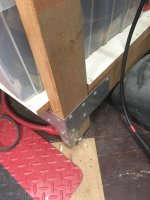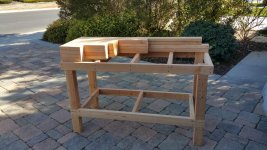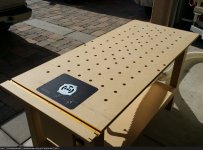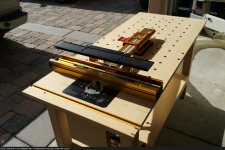Hold on just a minute here....
You need to tell us exactly what you're planning on doing. You said "workbench base." Do you have plans/design? The truth is you can make a quick and dirty 2x4 workbench base WITHOUT edge jointing the lumber, flattening, or planing anything. This is how I made my first workbench base with doubled up 2x4s glued and screwed, and while it ain't the prettiest due to the roundovers, it has held up just fine for 10 years. I never even bothered sanding it.
Now, as to the sanding you referred to, your existing sanders can sand for smoothness just fine. They will NOT help you flatten material. It's unclear whether that is your intention - you mention edge jointing via tracksaw but unclear if you really want perfectly flat faces square to the edges or whether you simply want to sand the faces smooth for aesthetics.
Again, it comes down to your goals. You can make a great base out of 2x4s, and it can look even better if you actually square up the lumber and glue up true 4x4 legs and stretchers, etc. Whether you really need to go to those lengths on what sounds like your first workbench (which you will probably want to modify if not replace after you use it for a while) is up to you - it is mostly about craftsmanship and aesthetics and less about the functionality of the workbench base.
If you DO want to square up the lumber, then you need a better strategy for dealing with the faces than random orbit (or Rotex) sanders. Access to a jointer and planer would be the best option. A planer alone would be next best. After that, a drum sander, though it would be darn slow going and make you want to gouge your eyeballs out. After that, a handheld power planer (good ones not by Festool include Bosch or Makita), with the caveat that your results will appear to be flat but not truly squared lumber (the faces will be flat but no guarantee they will be parallel to each other). After that, handplanes. I put hand planes last because for a new woodworker IMO, they can be an exercise in frustration. You have to learn how to wield them, have to learn how to sharpen properly, and after all of that, it's still a hell of a lot of manual labor. Do you want to dive down that rabbit hole or do you want to get yourself a functional workbench base? Many woodworkers enjoy it though.
Now, the top - what are you planning on using? If solid lumber, you will have to deal with flattening it. If you're mostly a power tool guy and want a good work surface to use with all your Festools, I might recommend going with something like doubled up MDF. Again, depends on your goals and what KIND of bench you're wanting to build. Tell us more.

